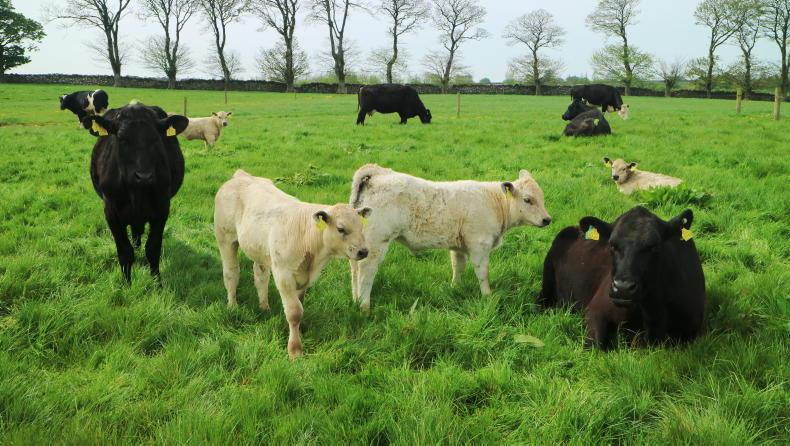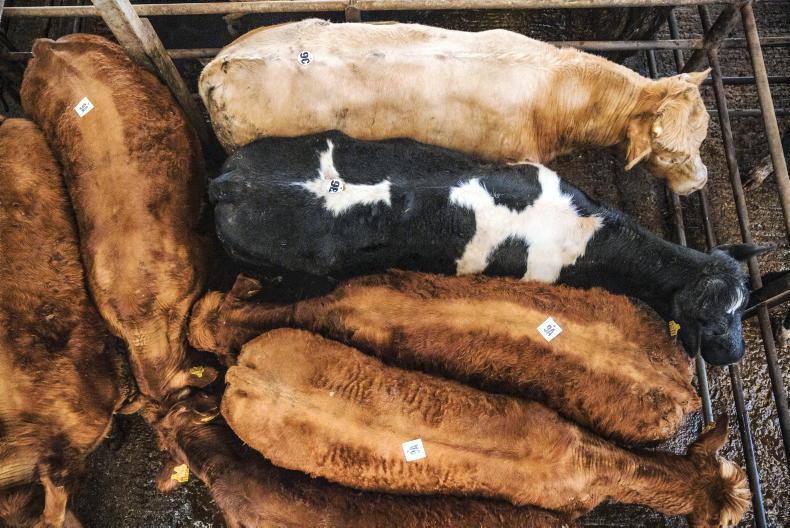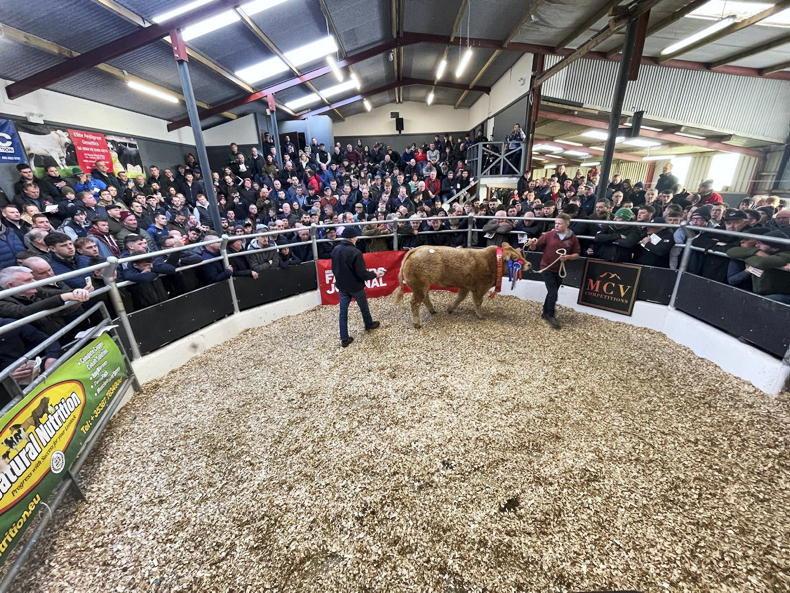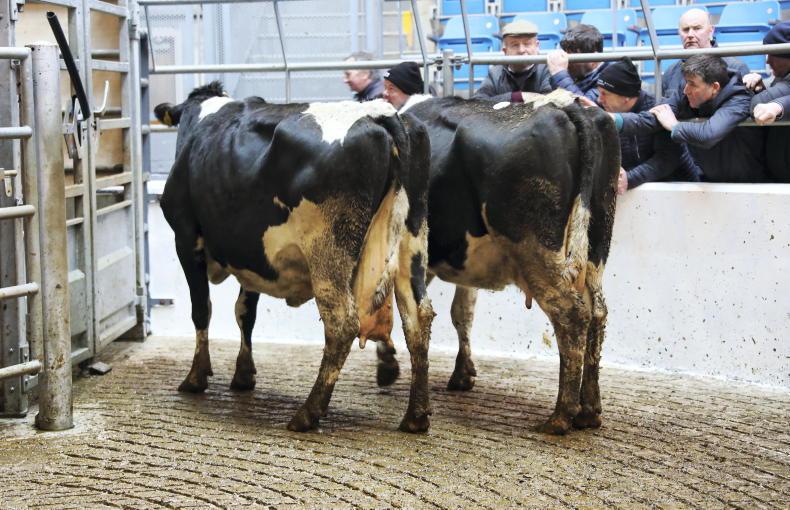The Suckler Carbon Efficiency Programme (SCEP), which replaces the Beef Data and Genomics Programme (BDGP) in the new CAP, is set to open for applications in late March. The scheme, with a budget of €260m over the next five years, is targeting participation from 20,000 herds and 400,000 cows.
This represents a significant reduction from the average of 22,600 herds participating between 2016 and 2020 and almost 500,000 cows supported in 2021. The lower target participation rate has, however, provided an opportunity for a higher payment for herds that do participate.
The level of payment is calculated on an area basis (€225/ha for the first 15 eligible hectares and €180/ha thereafter) equating to €150/cow on the first 10 cows in a herd and €120 thereafter.
Reference number
The level of payment will be based on a reference number of animals as was the case in BDGP. However, farmers will have the ability in SCEP to influence the reference number by deciding which years to use to calculate it.
The reference number will be based on the average number of cows calved down in a herd from a combination of any three years in the period from 2016 to 2021. This will be undertaken at the time of application, with farmers presented with historic data from 2016 to 2021 detailing the number of cows that calved in those years.
The average number of cows from the three years selected (or two years if cows only calved in two years) will be divided by 1.5 to determine the maximum payable area.
A farmer will also have the opportunity to revise the reference figure downwards at the time of applying for each year. Farmers must retain 80% of the land area used to calculate the reference number, eg a payment on 20 cows is based on 13.33ha, so 10.66ha must be claimed on BISS.
This option can be used where a farmer wants to reduce cow numbers or where farming circumstances force a reduction in numbers. Farmers will be free to increase the reference number to the maximum figure in subsequent years.
The number of cows farmer possesses can exceed the reference figure, but no payment will be forthcoming on any numbers above the reference figure.
New elements
There are a number of new elements in SCEP compared to the BDGP:
Bord Bia SBLAS member: A key eligibility requirement in SCEP is that farmers must be a member of the Bord Bia Sustainable Beef and Lamb Assurance Scheme at time of application. This is a contentious eligibility requirement, with suckler-to-weanling producers arguing that it does not deliver any benefits to their system. 50% calving rate: In the BDGP there was no requirement for farmers to calve cows as long as they had enough new animals to be genotyped each year. In SCEP, participants must calve down at least 50% of the reference number of animals each year. Training: Participants will be required to attend a half-day livestock handling course before the end of year two, along with mandatory training on the implementation of the actions under the scheme in the first two years of the contract. The training facilitator will receive €100 per attendee per year and the Department says the farmer payment is built into the level of payment per cow. Cow-calf weighing: The weighing element of the Beef Environmental Efficiency Programme (BEEP) is now included in SCEP. At least 70% of the reference number of animals on the holding must be weighed every year, with weights submitted by 1 November annually. A cow-calf pair must be weighed on the same day and not before a calf is at least 100 days of age. Herd measures
In addition, existing herd breeding measures from BDGP are being carried forward to SCEP but with higher targets. These are summarised below:
Replacement strategy: In years one and two, at least 80% of calves produced on the holding must be bred from a four- or five-star sire, as per ICBF evaluations (may cause challenges for new entrants). This increases to 85% in years three and four and 90% in year five. On the dam side, at least 50% of the reference figure of cows retained on the holding must be rated as four- or five-star as per the ICBF replacement index evaluations. This increases to 65% in years three and four and 75% in year five. Genotyping: At least 70% of the reference number of animals on the holding must be genotyped each year of the programme, without repetition. This is an increase of 10% on BDGP requirements.Data recording: Participants must provide a range of data through animal events, records and surveys. This is similar to BDGP and covers aspects such as calf quality/docility, animal health metrics, bull docility / functionality etc.
The Suckler Carbon Efficiency Programme (SCEP), which replaces the Beef Data and Genomics Programme (BDGP) in the new CAP, is set to open for applications in late March. The scheme, with a budget of €260m over the next five years, is targeting participation from 20,000 herds and 400,000 cows.
This represents a significant reduction from the average of 22,600 herds participating between 2016 and 2020 and almost 500,000 cows supported in 2021. The lower target participation rate has, however, provided an opportunity for a higher payment for herds that do participate.
The level of payment is calculated on an area basis (€225/ha for the first 15 eligible hectares and €180/ha thereafter) equating to €150/cow on the first 10 cows in a herd and €120 thereafter.
Reference number
The level of payment will be based on a reference number of animals as was the case in BDGP. However, farmers will have the ability in SCEP to influence the reference number by deciding which years to use to calculate it.
The reference number will be based on the average number of cows calved down in a herd from a combination of any three years in the period from 2016 to 2021. This will be undertaken at the time of application, with farmers presented with historic data from 2016 to 2021 detailing the number of cows that calved in those years.
The average number of cows from the three years selected (or two years if cows only calved in two years) will be divided by 1.5 to determine the maximum payable area.
A farmer will also have the opportunity to revise the reference figure downwards at the time of applying for each year. Farmers must retain 80% of the land area used to calculate the reference number, eg a payment on 20 cows is based on 13.33ha, so 10.66ha must be claimed on BISS.
This option can be used where a farmer wants to reduce cow numbers or where farming circumstances force a reduction in numbers. Farmers will be free to increase the reference number to the maximum figure in subsequent years.
The number of cows farmer possesses can exceed the reference figure, but no payment will be forthcoming on any numbers above the reference figure.
New elements
There are a number of new elements in SCEP compared to the BDGP:
Bord Bia SBLAS member: A key eligibility requirement in SCEP is that farmers must be a member of the Bord Bia Sustainable Beef and Lamb Assurance Scheme at time of application. This is a contentious eligibility requirement, with suckler-to-weanling producers arguing that it does not deliver any benefits to their system. 50% calving rate: In the BDGP there was no requirement for farmers to calve cows as long as they had enough new animals to be genotyped each year. In SCEP, participants must calve down at least 50% of the reference number of animals each year. Training: Participants will be required to attend a half-day livestock handling course before the end of year two, along with mandatory training on the implementation of the actions under the scheme in the first two years of the contract. The training facilitator will receive €100 per attendee per year and the Department says the farmer payment is built into the level of payment per cow. Cow-calf weighing: The weighing element of the Beef Environmental Efficiency Programme (BEEP) is now included in SCEP. At least 70% of the reference number of animals on the holding must be weighed every year, with weights submitted by 1 November annually. A cow-calf pair must be weighed on the same day and not before a calf is at least 100 days of age. Herd measures
In addition, existing herd breeding measures from BDGP are being carried forward to SCEP but with higher targets. These are summarised below:
Replacement strategy: In years one and two, at least 80% of calves produced on the holding must be bred from a four- or five-star sire, as per ICBF evaluations (may cause challenges for new entrants). This increases to 85% in years three and four and 90% in year five. On the dam side, at least 50% of the reference figure of cows retained on the holding must be rated as four- or five-star as per the ICBF replacement index evaluations. This increases to 65% in years three and four and 75% in year five. Genotyping: At least 70% of the reference number of animals on the holding must be genotyped each year of the programme, without repetition. This is an increase of 10% on BDGP requirements.Data recording: Participants must provide a range of data through animal events, records and surveys. This is similar to BDGP and covers aspects such as calf quality/docility, animal health metrics, bull docility / functionality etc. 









SHARING OPTIONS